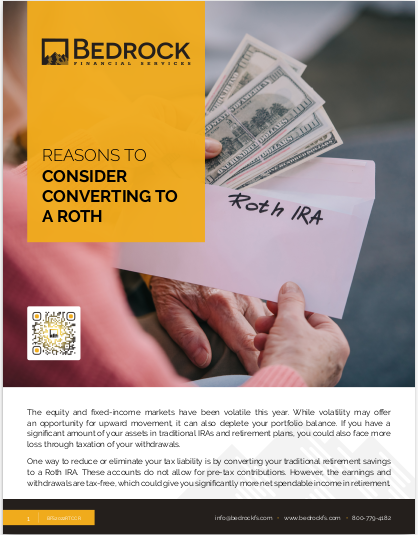Key Takeaways
-
Not all lead lists are equal. Asking the right questions can help you avoid wasting time and budget on low-conversion prospects.
-
In 2025, the most successful financial professionals are blending quality-first strategies with data verification tools to ensure every lead is worth their effort.
Think Before You Buy: What’s the Real Value of This Lead List?
Before you hit “purchase” on your next lead list, step back and evaluate what you’re actually getting. Lists can look tempting, especially when they promise volume. But volume means nothing without quality—and in 2025, quality is the only metric that moves the needle.
If your lead list can’t hold up under scrutiny, it’s not worth your time, money, or energy. Start with these fundamental questions:
-
Who compiled this list, and how?
-
When was the data last verified or updated?
-
What’s the opt-in status of these leads?
-
Do these contacts match your client profile or niche?
In the digital-first environment you’re operating in now, asking these questions isn’t optional. It’s risk management. And in a market where consumer trust is fragile, one misstep with poor leads can set back your reputation and goals by months.
1. When Was This Data Collected?
You’re not just buying contact names—you’re buying a snapshot of opportunity. But if that snapshot is more than 6 months old, you’re likely purchasing outdated information. In the insurance and financial services world, even a 90-day-old list can contain people who’ve already made a decision, moved, or lost interest.
In 2025, data freshness matters more than ever. Algorithms are faster. Clients move on quicker. Attention spans have shortened, and buyers are more selective. If the vendor can’t prove the data is recent and verified—ideally within the past 30 to 60 days—walk away.
Even small delays in updating contact details can mean disconnected numbers, invalid emails, or worse—reaching out to someone who has no memory of opting in.
2. Is the Data Source Transparent?
Any reputable vendor should disclose where and how they sourced their leads. Did they come from surveys, landing pages, webinars, social engagement? Or were they scraped from third-party directories or purchased through questionable resellers?
Opaque sourcing is a major red flag. Without transparency, you’re likely to run into:
-
Compliance issues
-
Low engagement rates
-
Wasted contact attempts on uninterested parties
Look for sources that align with compliant practices and have proof of user interaction or consent. If the vendor won’t—or can’t—give you a clear breakdown of data origin, that’s a strong sign you’re about to make an expensive mistake.
3. Do These Leads Match Your Ideal Client Profile?
Your time is too valuable to be spent chasing mismatched leads. Whether you specialize in Medicare, retirement planning, or life insurance, your lead list must reflect your ideal client demographics.
Ask the vendor for specifics:
-
Age brackets
-
Income thresholds
-
Geographic filters
-
Family or employment status
-
Behavioral traits (e.g., planning for retirement, caring for aging parents)
In 2025, the expectation is not just to buy leads—it’s to buy relevance. Generic or poorly segmented leads will clog your pipeline and slow your progress. With so many professionals in the space, you can’t afford to work with names that don’t align with your value proposition.
4. What’s the Engagement History?
This is one of the most overlooked—but critical—questions. Are you getting a cold list or one that includes engagement history such as email opens, form submissions, or past inquiries?
In 2025, intent signals are a game-changer. You need to know:
-
Have these people shown interest in a service like yours recently?
-
Are you the first person contacting them—or the tenth?
-
Has the list been sold to multiple professionals already?
-
Have they interacted with content, filled out a form, or requested more information?
Leads who have already been contacted by several others are more likely to be frustrated or unresponsive. The more you know about the engagement timeline, the more strategically you can tailor your outreach.
5. What Legal Compliance Standards Does This List Meet?
You are operating in a heavily regulated industry. Buying lists that aren’t compliant with consumer protection laws—like the TCPA, CAN-SPAM, or data privacy regulations—puts your business at risk.
Ask the vendor for documentation that clearly shows:
-
Opt-in consent for contact
-
Do Not Call (DNC) list filtering
-
Compliance with GDPR, CCPA, or other regional laws
-
Data protection and encryption protocols
With evolving data laws in 2025, you can’t afford to be vague on this front. A lack of compliance not only jeopardizes your brand, but can lead to hefty fines and legal complications.
6. What’s the Real Cost Per Acquisition?
The list might sound cheap—but what’s it really costing you?
Take into account:
-
Your time spent calling or emailing dead-end contacts
-
The opportunity cost of pursuing the wrong leads
-
The wear and tear on your reputation
-
Your marketing budget wasted on non-converting prospects
In reality, a $5 lead that doesn’t convert is more expensive than a $25 lead that turns into a long-term client. Cost per acquisition—not cost per lead—should be your guiding metric. Smart professionals today are investing more in higher-intent leads with better segmentation because they’ve seen firsthand how much easier it is to build relationships that last.
7. Can You Test Before Committing?
Would you buy a new car without a test drive? The same logic applies here. A test sample helps you see if the leads live up to the promise.
Reputable lead vendors in 2025 should allow you to test a small sample before requiring a full purchase. This gives you a chance to assess:
-
Lead quality
-
Conversion rate
-
Responsiveness
-
Fit for your niche
Even a small pilot test can save you from wasting thousands later. If they’re unwilling to offer a trial or short-term option, that’s a red flag you shouldn’t ignore.
8. Is There Support After the Sale?
What happens once the list is delivered? Are you left on your own, or does the vendor offer:
-
CRM integration assistance?
-
Help with formatting or segmenting the data?
-
Follow-up reporting on open rates or engagement?
-
Lead replacement for invalid or bounced contacts?
In 2025, service doesn’t end at the point of sale. Post-sale support is crucial if you want your lead investment to translate into actual results. A vendor that walks away after delivering the file is not a partner—they’re just a seller.
9. Are You Ready to Follow Up Effectively?
No matter how good the list is, your success hinges on the follow-up. In 2025, people expect:
-
Timely, personalized communication
-
Value in the first message
-
Clarity on why you’re reaching out
Do you have the infrastructure to:
-
Send personalized emails or texts within 24 hours?
-
Track engagement and response rates?
-
Score leads based on behavior and interests?
-
Automate your workflows without losing the human touch?
Buying leads without a follow-up plan is like buying seeds and never planting them. Even the best leads will go cold if your outreach isn’t thoughtful, relevant, and prompt.
10. Are There Better Alternatives?
Buying lead lists might feel like a shortcut, but in 2025, there are smarter, longer-term strategies to consider:
-
Build your own lead funnel through educational content, social proof, webinars, or partnerships.
-
Use inbound marketing tactics to attract higher-intent prospects who come to you.
-
Partner with data-backed platforms that offer exclusive, high-conversion leads.
-
Leverage automation tools to capture, qualify, and nurture leads in real time.
Sometimes the better investment isn’t a list—it’s a system that brings the right people to you consistently. And once that system is in place, it continues working long after a lead list has gone stale.
Build Smarter, Not Just Faster
You’re not just in the business of contacting people—you’re in the business of building trust, solving problems, and providing long-term value. A cheap lead list might deliver names, but it won’t deliver relationships.
Before you buy another lead list, take the time to assess whether it aligns with your long-term goals, your client profile, and your compliance standards. The smarter move might be to shift from buying to building. Prioritize quality over quantity, and align your outreach with a strategy that respects your clients’ time and intelligence.
And if you’re ready to stop chasing leads and start attracting the right ones, we can help. At Bedrock Financial Services, we support professionals like you with vetted lead strategies, proven marketing systems, and the technology to scale what already works. Sign up today and see how we can take your outreach from transactional to transformational.







